“If you play your heart out for what your jersey says on the front, everyone will remember what the jersey says on the back.”That famous quote from Miracle tells you more than you would ever need to know about any legend who has played any sport. Each year, an exodus of legends from your favourite sport force you to embrace heartbreak and move on.Some wait for those big shoes to be filled, some write paeans about how and why those big shoes can never be filled. History forgives these legends for their flaws, for how their careers ebbed and flowed, for their dips, for their losses and mythologizes them for the great players they were.Some years like 2015, witness more than their share of loss. Several great players bid adieu to international cricket. Most of these greats have played for so long, they represent an era, an entire generation which grew up watching them play, intimidate, compete, fight, win or lose.We take a look at five of these greats who impoverished the game through their exit in 2015 and the massive impact their presence and absence makes to cricket.
#1 Kumar Sangakkara
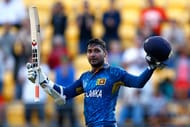
Sangakkara is that lucky legend, who walked out on his own terms, while still at his prime while still being his team’s best player, most reliable and most adored as well. As if there was any doubt over his credentials, he slammed four consecutive ODI centuries, that too at the game’s greatest stage, the 2015 ODI World Cup, a record that might stay for a really long time, and he has enough of those immortal records already.
The lanky southpaw is probably the closest bridge between his generation of batsmen and the previous – aggressive but beautiful to watch, defiant but elegant, attacking but responsible – batsmen who like Aristotle once said, played angrily not because they were angry but because they were required to be angry.
Sangakkara’s average towers even in comparison to those of greats like Sachin Tendulkar, Jacques Kallis, Rahul Dravid and Brian Lara. That he racked up those numbers while being his country’s first choice wicket-keeper for over a decade, tells you what he was capable of, had he not taken up the additional responsibility – something that he elucidated with his last couple of years in international cricket, when he didn’t don the gloves while playing in whites.
Sangakkara finished with 12,400 runs at 57.40 in 134 Tests with 38 centuries and 52 half-centuries. In double-centuries, he was only next to Don Bradman himself, with 11. Sangakkara also has 182 catches to go with those runs and 20 stumpings.
In ODIs, he has 14,234 runs at 41.98 in 404 ODIs with 25 centuries and 93 half-centuries. He is next only to Sachin Tendulkar in ODI runs, although he had 402 catches and 99 stumpings to go along with his runs. Sangakkara’s greatness can also be inferred from his Test record, with his away average being a staggering 53, very close to his home average of 60.
Also, he averaged 60 in Australia, 61 in New Zealand and a respectable 41 in England. However, he averaged just 35 and 36 in India and South Africa. Sangakkara retired in a staggered format, playing two out of the three Tests each his team played at home, first against Pakistan and then against India, to respect his commitment to Surrey.
Although no memorable innings came from those appearances, Sangakkara by then had already made his name in the pantheon of great cricketers and is easily Sri Lanka’s most revered, arguably ahead of Muralitharan and Aravinda de Silva.
#2 Virender Sehwag
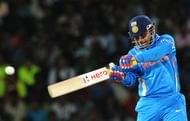
Some players are loved for their numbers, some are loved for their elegance. A few, though, like Virender Sehwag were loved for what they were, representing nothing but the pure joy of playing cricket. Sehwag appealed to that part of your head that fell in love with cricket as a child.
He remains one of the game’s greatest for two reasons – he remained incorruptible through highs and lows, always playing with a smile, joking around, smiling around, separating the game from emotions and secondly, because he changed the way the game is played, although he played in one and only one way.
Sehwag has the second highest ODI strike-rate of anyone with more than 5,000 runs, 104.33 next only to Shahid Afridi. He scored 8,273 of the most delightful ODI runs in 251 ODIs at that blistering strike-rate. The man who boasts of some of the game’s fastest double centuries, almost became the first batsman ever to score three Test triple centuries, falling on 293.
Sehwag, knowing for starting five 2011 World Cup innings with a four off the first ball and for often attempting sixes when approaching a milestone, scored 8,586 runs in 104 Tests at 49.34, with 23 centuries and 32 half-centuries. Those runs came at an unbelievable strike-rate of 82, a number that is respectable even in ODIs.
Although Sehwag’s career ended tragically, when he was dropped in the middle of a home series against Australia, he boasts of an impressive average of 54 at home and a respectable 44.65 away, saving his best for Sri Lanka and Pakistan. He averaged an impressive 50 against South Africa, the nation against whom he debuted with a century.
Starting out as an all-rounder bowling off-spin, Sehwag, bloomed under Sourav Ganguly’s inspirational leadership, part of the Golden Four Ganguly had discovered – Harbhajan, Yuvraj, Sehwag and Zaheer.
Sehwag’s best phase was between 2008 and 2010 when India soared high, thanks to its right blend of senior and young players, equalling his rich vein of form early in his career between 2003 and 2006.
During 2008-2010 Sehwag averaged 56, 70 and 61 respectively, following which his form dropped drastically as he returned numbers of 29, 31 and 9, playing just two Tests in 2013.
After that, he carried on hoping to be picked, but the Test call never really came and he eventually called it quits with one last first class season playing for Haryana, instead of his home team, Delhi.
#3 Mitchell Johnson
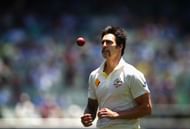
Of all the mercurial players who have bowled the red cherry in whites, Mitchell Johnson will be one of the most revered and feared. He was a career-wrecker as Jonathan Trott would tell you. At his best, Johnson was unplayable – capable of swinging the ball at great pace, generating skiddy bounce off the surface, intimidating the batsman and doing so with the left arm.
He surprised everyone by calling it a day at 34 with a couple of years of cricket still left in him. Perhaps, Johnson loathed using his most feared and potent weapon, the short ball and the end of his career was probably hastened by Phil Hughes’ tragic demise.
Johnson picked up 313 wickets in 73 Tests at 28.4 and 239 in 153 ODIs at 25.26. He was not bad with the bat, scoring 2065 runs at 22.2, a number that could have gone much higher, as sworn by many who saw his high back-lift, free-flowing stroke-play and enterprise lower down the order.
For the first half of his career, Johnson was unpredictable – swinging like his stock delivery from one end to another. He averaged a dismal 56 in 2011 after hitting a low in 2010 with an average of 34. But he returned with renewed vigour and couple of tweaks in his action.
Dennis Lillee’s protégé averaged 20, 17 and 23 in the next three years. In 2013/14 Ashes, Johnson picked up 37 wickets, a phase referred to as the Reign of Terror. The next highest was Ryan Harris’ 22. Johnson’s 37 came at 13.97 and he struck once every 30 balls with 3 five wicket hauls. No England batsman who played in that series returned unscathed or unscarred by that experience.
Johnson was part of the losing Ashes campaign in England in 2015 and played his last two Tests against New Zealand at home, refusing to play in the Day-Night Test and be part of history. In 2015, his form dipped as he picked 30 wickets at 33.76.
Interestingly, Johnson’s best numbers came against England, New Zealand and South Africa, against whom he averaged 26, 23 and 26 respectively. Against the three sub-continental teams, India, Pakistan and Sri Lanka, he averaged above 30, showing his ineffectiveness in conditions not so conducive to pace bowling.
Nevertheless, Johnson was an impact player and will always be remembered for the unbelievable spells that create converts and give fans something to remember and relish, swearing by his handlebar moustache, the great Mo!
#4 Michael Clarke
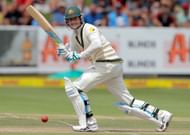
Michael Clarke finished his career losing the Ashes and with a Test average of 49.10, denying himself of the hallmark of great Test batsmen, the half-century average. He had won the World Cup a few months prior to that, although his contribution to the Australian winning team, with the bat, was nothing to write home about.
In his last Test series, Clarke scored 132 runs in 9 innings at 16.5 with a best of 38. Ironically, his heir apparent was the highest run-getter of the series. Steve Smith scored 508 runs at 56.44. Probably Clarke realised that it was time to go.
Clarke was just 34, but considering his bad back that almost ended his career, prior to the series against India in late 2014, and had raised its ugly head many a time during his career, playing 115 Tests in itself was a sheer miracle.
His 8,643 runs make him the 19th highest run-getter in Tests, Australia’s 4th highest. Ideally, 10,000 wasn’t too far away and given his elegance, technique and temperament and the way he moulded himself from being one of the most hated Australian cricketers to one of the most loved, Clarke would have achieved it.
But, his biggest enemy was his back, something he couldn’t defeat in spite of a great work ethic whose intensity hadn’t gone down even during the controversial tenure of Mickey Arthur. Indians, in particular, will remember Clarke for his best performances with the bat and ball – 329* and 6/9.
Clarke’s best average though was against Sri Lanka, close to 75. He was impressive against South Africa as well, with an average of 67.6.
Interestingly, England, against whom Clarke played 35 Tests had his measure, with his average hovering around 40, bringing down his overall record a little bit. Clarke also didn’t perform as impressively away as at home averaging above 60 in Australia and 41 away, still an impressive number.
#5 Zaheer Khan
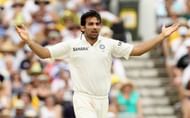
In a land known for its dust-bowls, where tweakers wreaked havoc and bamboozled batsmen with guile, turn and deceit, there was always a thirst for a bowler who could grind batsmen to dust with sheer pace and swing. India envied Pakistan, salivating at the sight of Wasim and Waqar ripping batting orders around the world apart.
Until Zaheer Khan arrived.
Zaheer was India’s first genuine fast bowler, in the era of speed guns and he proved himself against the class of Australia in the Champions Trophy at Nairobi. But, Zaheer’s contribution wasn’t restricted to that. The left-armer showed how one can see great success, then a great fall and then come back to taste success yet again.
Plagued by injury, Zaheer was forced out of cricket several times, but he came back leaner and meaner. He virtually pushed himself into India’s best Test side ever, aided its rise to the No.1 Test ranking and helped MS Dhoni, win the World Cup in 2011 as one of the unsung heroes.
Zaheer is one of India’s most successful World Cup bowlers with 44 wickets in 23 ODIs, playing in the Final in two of three campaigns he was part of.
311 wickets at 32.94 in 92 Tests, 7/87 being his best and 282 wickets at 29.43 in 200 ODIs are extremely respectable for any fast bowler. But, Zaheer did more than just accumulate those numbers – he was the spearhead of India’s bowling machine, being thrust head-first, taking on the best batsmen of the opposition, a role he enjoyed, helping India win memorable away series like in England in 2007.
Zaheer, who had quit ODIs in 2012 to extend his career in whites played his last Test against New Zealand at Wellington, in February 2014, when he took a five-wicket haul in his last Test innings appearance, after which injuries and bad form forced him out of the team.
It was one comeback too many for him and he ended up hanging his boots without the hurrah his fans would have hoped for. Nevertheless, he finished as India’s second most prolific fast-bowling wicket-taker behind Kapil Dev.
Follow IPL Auction 2025 Live Updates, News & Biddings at Sportskeeda. Get the fastest updates on Mega-Auction and cricket news
